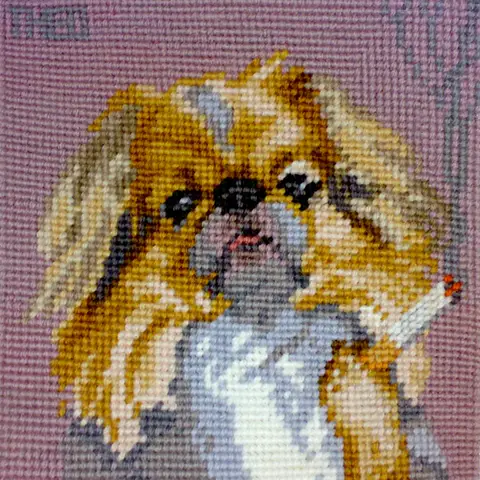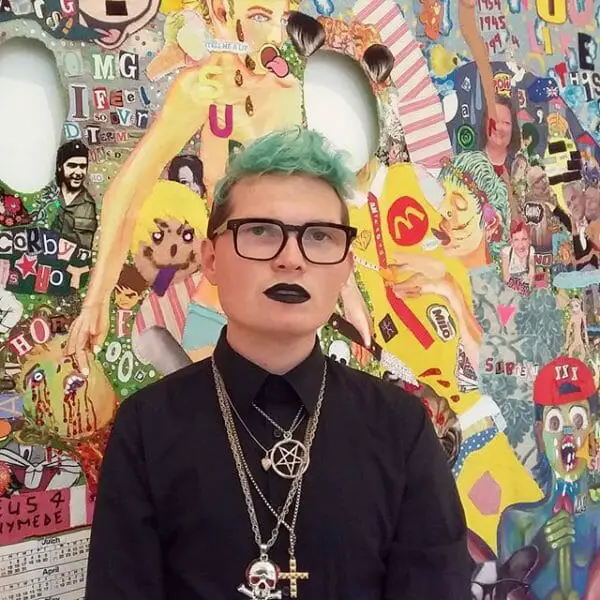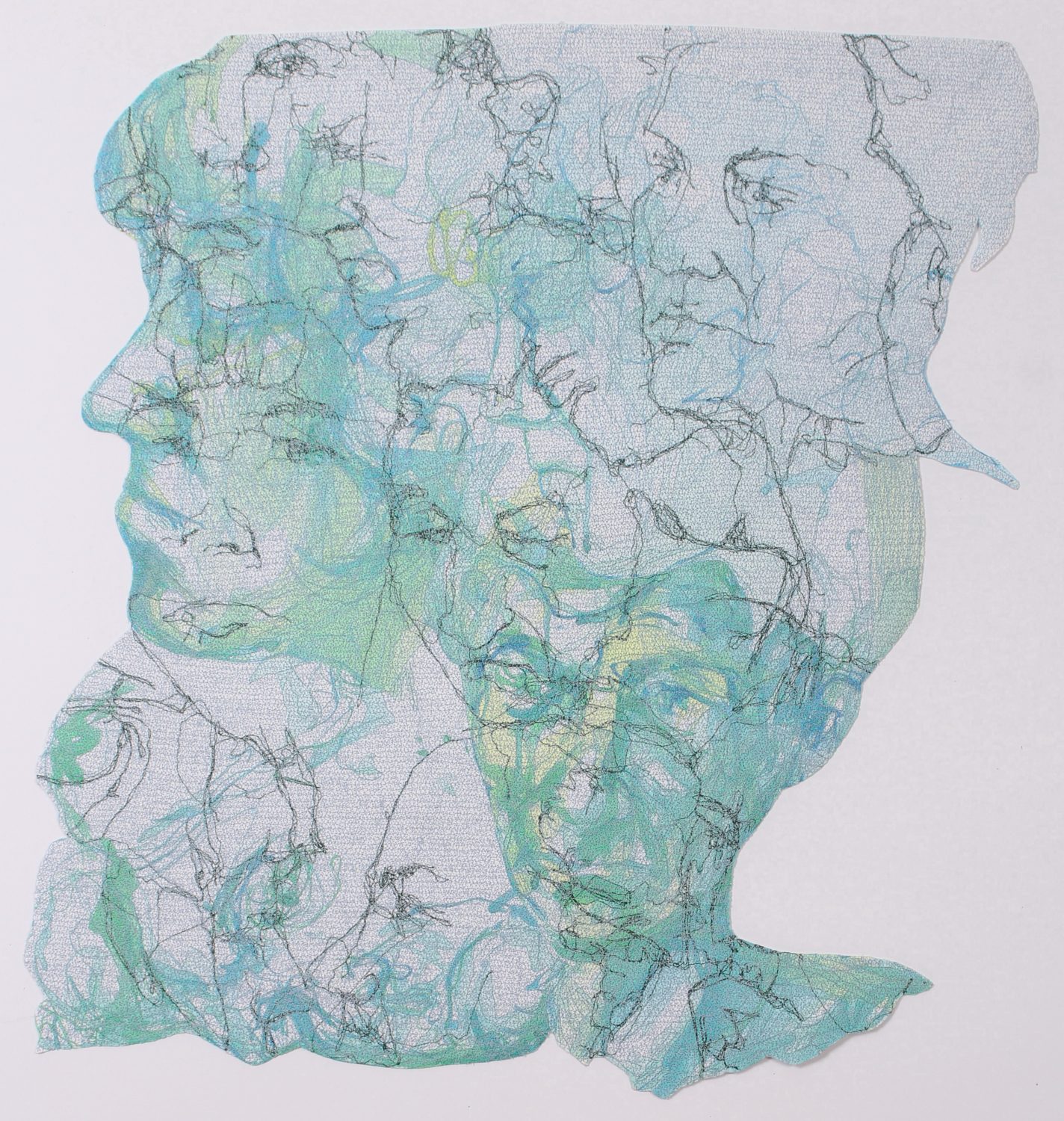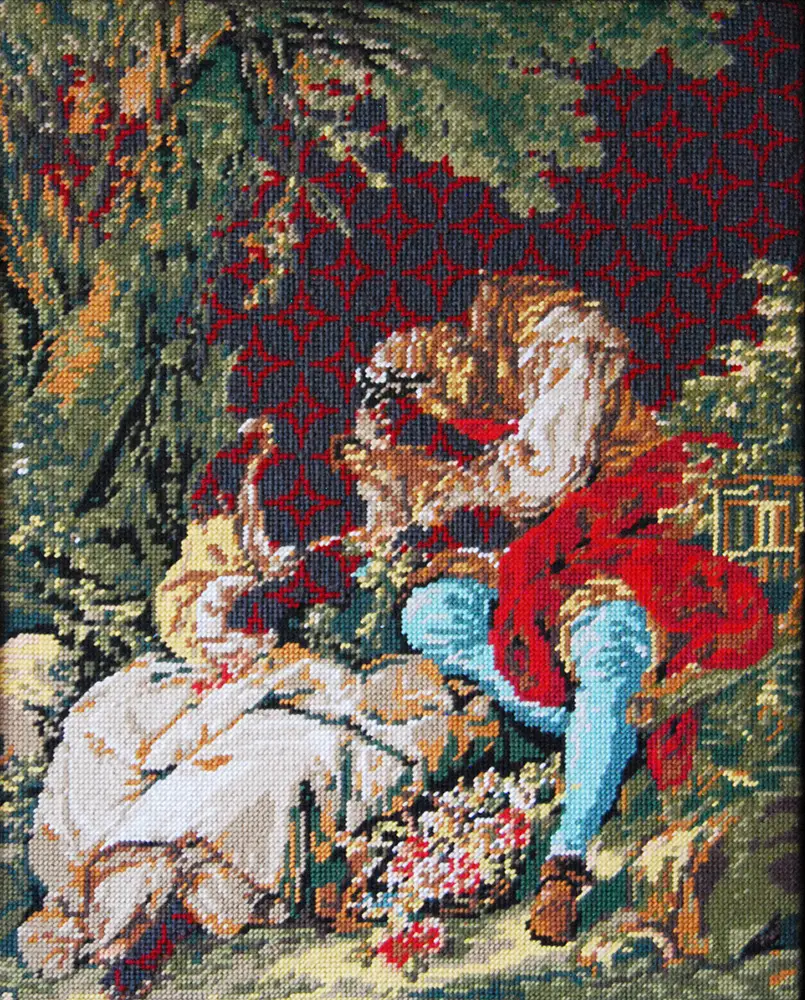
Welcome to Manbroidery, an ongoing series of interviews with men who stitch. This time we welcome Dr Jack Roberts aka JPR Stitch whose abstract free machine embroideries are zen-like musings on the creative process.

Name: Dr. Jack Roberts aka JPR Stitch
Location: Shropshire, UK
Main embroidery medium: Free-hand machine embroidery
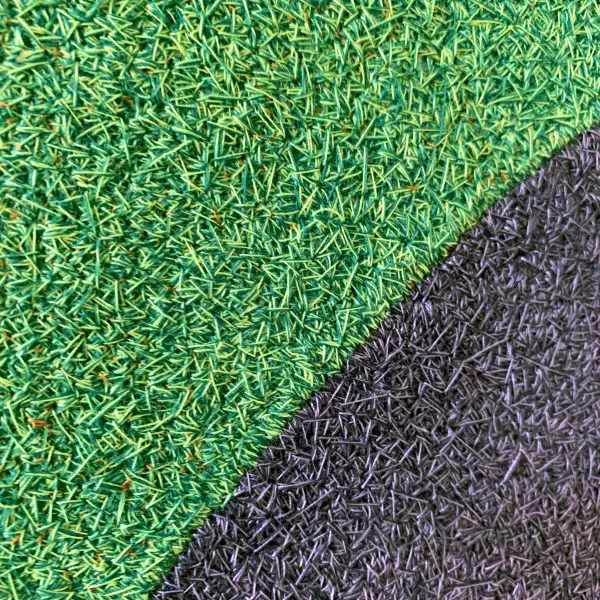
Noteworthy projects or pieces
Printmaking has become a very important part of my practice. This might sound odd that I am talking about prints when my art is made from embroidery but prints have become a secondary series of artworks.
They are created directly from my stitchings and they have become a reflective tool. They help me to look back at my stitchings to understand what they are about and what I am trying to achieve.

The prints are made by firstly creating an embroidery, this is then covered in wood-hardener to strengthen the thread and fabric. This allows the actual stitchings to be used as a printing plate – they are run through a printing press to create limited edition prints; some use colour and some are blind embossing.
The essence of the stitching is transferred into the paper – they become almost like a footprint in the sand, a memory of the stitchings.

How did you come to be an embroiderer?
I have always been drawn to textiles. When I was younger, my mum and nan taught me how to knit, sew, use a sewing machine and cross stitch – textiles have always been a form of relaxation for them as well as a hobby.
I have therefore always had an interest in textiles. I then expanded these skills to create art. Free-hand machine embroidery isn’t something that either of them have done, that is me finding my own ’place’ within this wider medium.
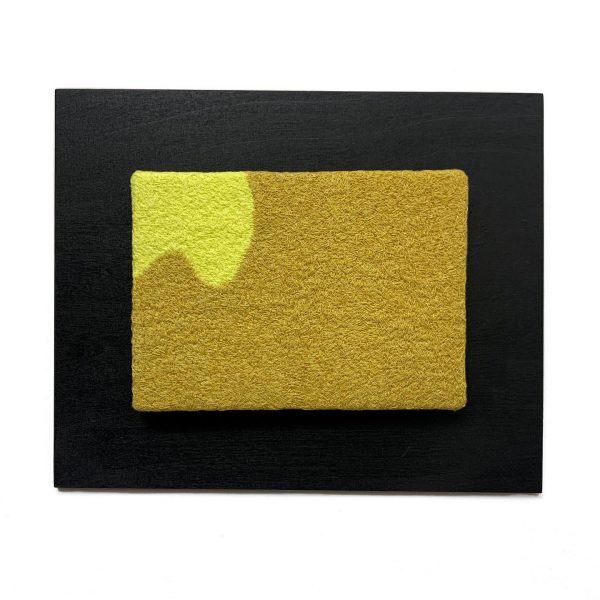
That is how I found ‘stitch’ and I have developed my skills in it through many ways including teaching it as well as spending a huge amount of time doing it.
Over the years of being educated in art and teaching art, I have developed skills in many areas but I always came back to stitch; this is probably because I feel a deeper connection to it. This is probably because of where and from whom my introduction to textiles came.

What does it mean to you?
I think one of the reasons I have kept coming back to free-hand machine embroidery is because I see it as drawing.
To me, it is almost like continuous line drawing – the fabric is the paper and the thread is the pencil. However, it is different to drawing because you work in an inverted way – you hold and move the paper (or fabric) and the pencil (or thread) stays still. I seem to understand this ‘inverted’ drawing style, I find it easier to work with and find that I have more control than when I draw in a traditional way.
The process is what I like and because I know it so intimately (because I have done it so much) the idiosyncrasies of the process don’t hinder me (thread snapping, needles breaking, bobbins running out).
Because of this I seem to drift off when I sew, I can sit for hours and just sew – I find the process calming.
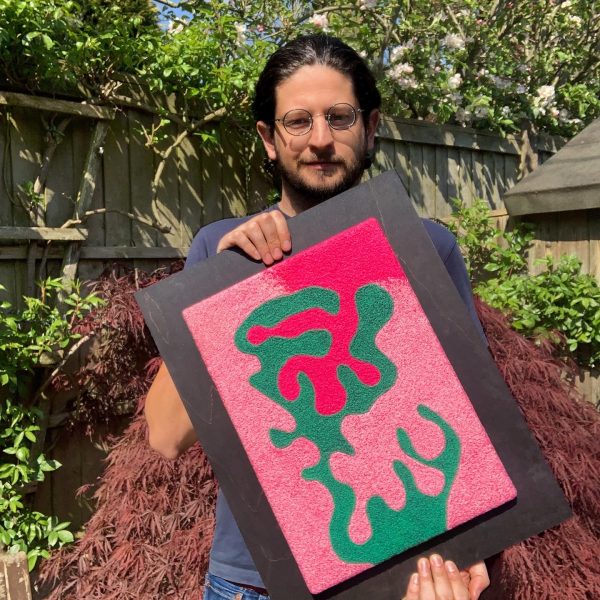
Where do you like to work?
When I can, I make outside in my garden surrounded by flowers and trees. For me the experience of creating art is important, I find it calming and tranquil; it almost rebalances me from the noise of everyday life.
Stitching outside seems to intensify the calmness, tranquillity and rebalancing sensations that I feel when I make my art.

How do people respond to you as a male embroiderer?
Positively I guess, however it rarely comes up. I don’t see that being a male using embroidery as a big issue, mainly because I don’t see my gender as being related to my art.
Stitch allows me to achieve what I want to achieve artistically; I find calmness through the medium and the stitched artworks then inform other outputs such as printmaking and bronze. The historical use of stitch, its relationship to gender are not why I chose to work with stitch. I know that history of the medium and its association with gender are important to some artists working with stitch and textiles more broadly.
I occasionally do get asked about the relationship between my gender and my practice but I think when you get to know me, my art and my practice you soon realise that there isn’t a ‘story’ here.

Who inspires you?
There are lots, but they mostly don’t work in stitch or even textiles. I love the work of Alighiero Boetti, Sol LeWitt, Eva Hesse, On Kawara, Mark Rothko, Agnes Martin – their work doesn’t directly inspire the work I make, but they are artists whose practice intrigues me.
As far as what inspires my art, I think that it is more about me and how I am feeling. When I create, I sink into calmness and tranquillity; it is these feelings and sensations that directs my colour choices and the shapes that emerge. It is my mood at the time that I am creating that guides my art.
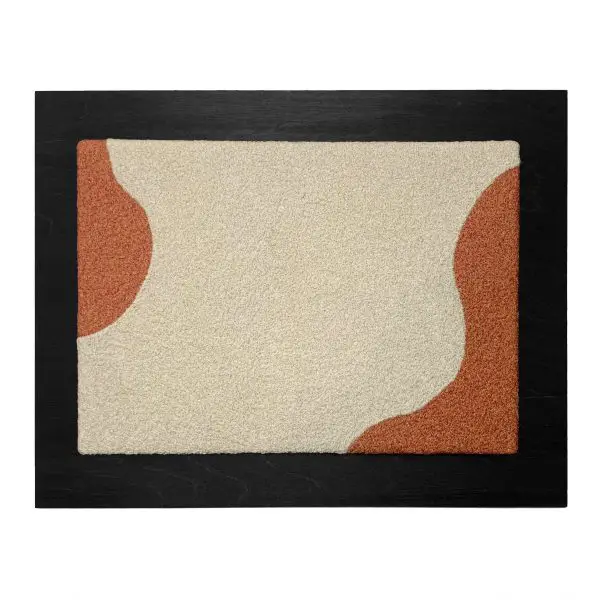
How or where did you learn how to stitch or sew?
I have already touched on my introduction to textiles, but learning how to create art from free-hand machine embroidery was very much a self-taught process.
I think when I began to see free-hand machine embroidery as a way to ‘draw’, my relationship with it changed. I was no longer creating art from embroidery because I had an affinity with textiles but I was using embroidery as a drawing technique as it’s inverted method (whereby you move the paper not the pencil) seemed to make more sense to me.
A sewing machine became a drawing tool that felt much more natural to me.

Are your current images new ones or have you used them before?
There aren’t really images in my art, it is more abstract shapes, patterns, colours and textures. When I sit to sew, I don’t have a plan or a design. I pick a thread and start to sew, when it feels ‘right’ I switch to another thread and continue to sew. I don’t pick two colours at the start; I pick one and then later on pick the next. I don’t draw out a pattern at the start; the pattern emerges as I sew.
However, when I look back at the artworks I have created, there are reoccurring patterns, shapes and colour pairings. I don’t really know what this means but I think balance has a lot to do with it.
I find the act of sewing rebalances me against the noise of everyday life – this balance seems to flow into the art, the colours need to feel balanced against each other, as do the shapes and patterns. When I am creating, I know when artworks are going in in the right direction as I get a sense of balance from them.
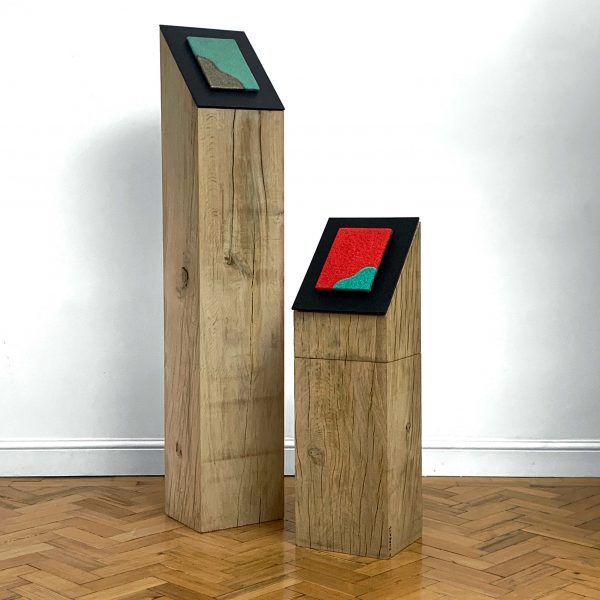
How has your life shaped or influenced your work?
I am sure that my stitchings are in some way a self-portrait so they will of course reflect me and in turn what has shaped me. However, what I think has most clearly shaped my artistic practice has been my experience in undertaking my PhD, it was theoretical (i.e., not practice based) and looked at the artist-dealer relationship.
Part of doing a PhD is depth of thought, thinking intensely about your topic and trying to understand it and find meaning. I found that when I had finished my Doctorate and I had space to make art (in a very different style to what I am doing now), I was thinking too deeply about it, every piece needed conceptualising and needed a theoretical essay to explain it. It was all getting too deep and in trying to understand my art and my practice, I stopped making. I kind of got stuck in analysis paralysis.

My current practice is almost a rejection of this need for depth and explanation – I pick a thread, sit at the sewing machine and sew. When I feel it is the right time, I swap to another coloured thread and continue sewing. The art has become about the experience, the tranquillity, the rebalancing effect, the calmness that I feel when making, and how this mood then seeps into the artwork and how the art then seems to reflects this outward to the observer.
I do sometimes still get stuck in analysis paralysis, but then I have to tell myself – ‘stop thinking so deeply, start sewing and by making you will perhaps understand it a little more’.
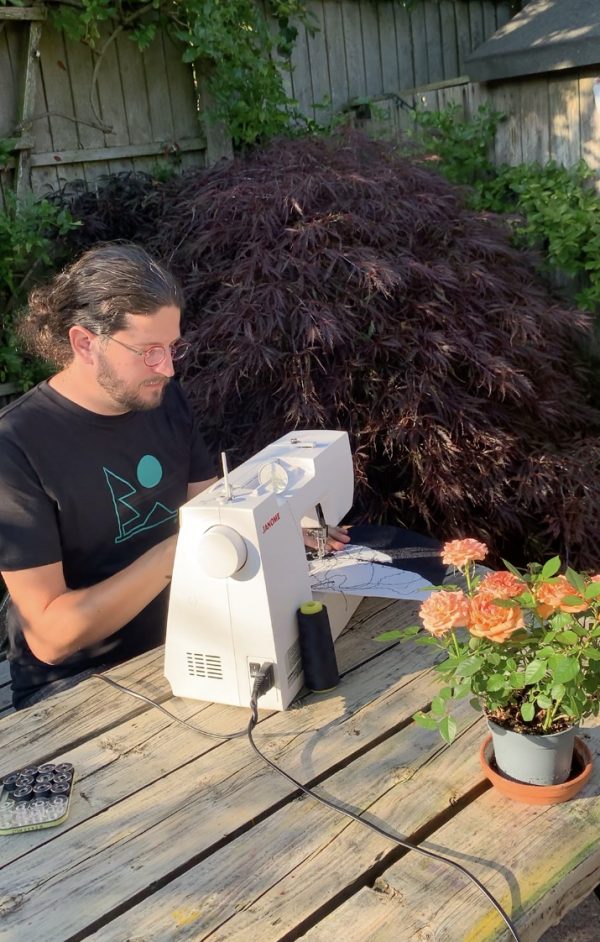
What are or were some of the strongest currents from your influences you had to absorb before you understood your own work?
It has taken me a while to understand what my art is about. My art had come out of overthinking and is an almost rejection of this. It took me a while to understand this, but this didn’t answer what my art was actually about, it only answered where it had come from.
It has taken a lot of thinking and sewing to understand that the experience of making is what drives my art, it is my mood when I create, the calmness I find when I sew, the rebalancing effect that sewing has on me.
Printmaking has helped me to understand what my practice is about – it is a way to reflect and think about my stitchings whilst still making. It has helped me to see what is important.
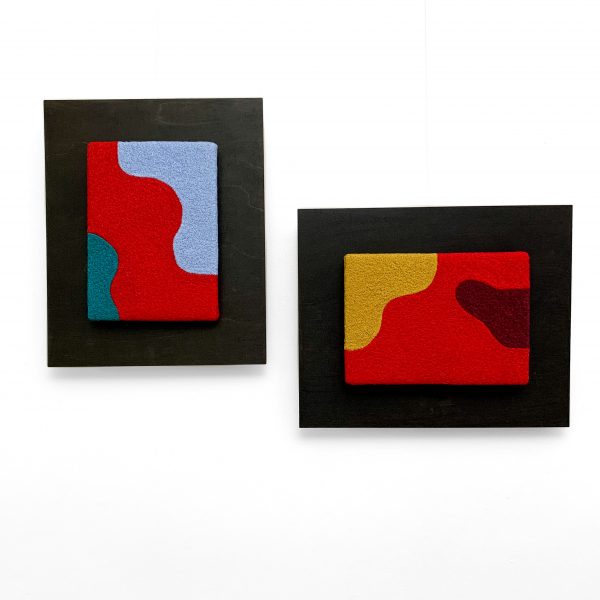
Do formal concerns, such as perspective and art history, interest you?
Very much so, and I feel they can be somewhat of a pressure. And this pressure can send me into analysis paralysis, so I try to keep my mind off these things.
If I start to think about how my art sits in relation to past artistic movements, the theory of art, other artists or artworks, I seem to stop making. My mind becomes consumed by trying to understand these concepts; consumed by understanding how me and my art relate to the cannon of art history.
Although these things do concern me, part of my way of working is to almost ignore them as they become counterproductive.
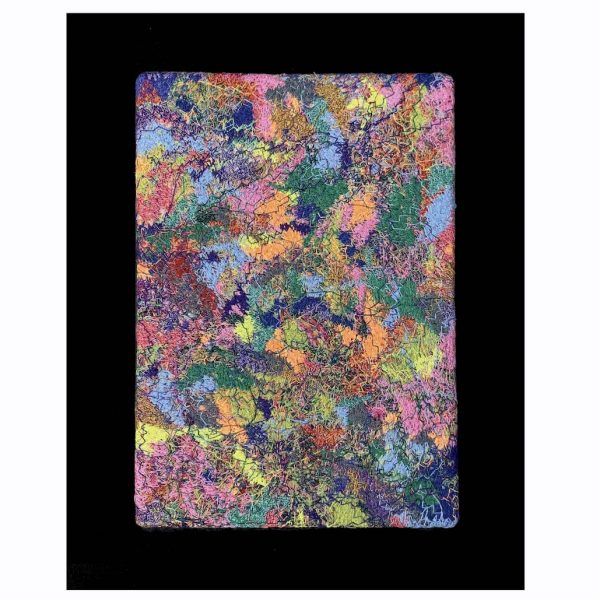
What do your choice of images mean to you?
My art isn’t based on images or about conveying images or meaning. They are a coming together of colour, pattern and texture, the stitchings become abstract, they are a reflection of mood and emotion. Some of the artworks do begin to form images, almost in a pareidolic way – people see images in the randomness.
We love these men who stitch.
I think this is especially true for my ‘collection’ artworks which are larger scale pieces that are created from the coming together of a group of individual stitchings, whereby the group of stitchings (usually 9 to 15) become more than the sum of the individual parts.
As they are larger artworks and your eye/mind has to fill in the gaps between the artworks, this effect of ‘seeing’ images within the patterns and shapes becomes intensified – almost like seeing shapes in clouds.

Do you look at your work with an eye toward it like what can and can’t be visually quoted? In other words what you will or won’t cut out?
Knowing when an artwork is finished is something that I have found hard in the past, but I don’t find this with my current way of working. A piece is finished when the fabric is full of stitch.
Even at this point if they don’t feel totally balanced, I don’t go back and rework them, they are finished and I move on. This is partly me trying to keep my practice moving forward.
In the same way that analysis paralysis stops me making, striving for perfectionism is the same, I could spend eternity on one piece working and reworking it – it would never be finished or ‘perfect’. Instead by knowing when a piece is finished (when the fabric is full of stitch), I know when to move onto the next piece.
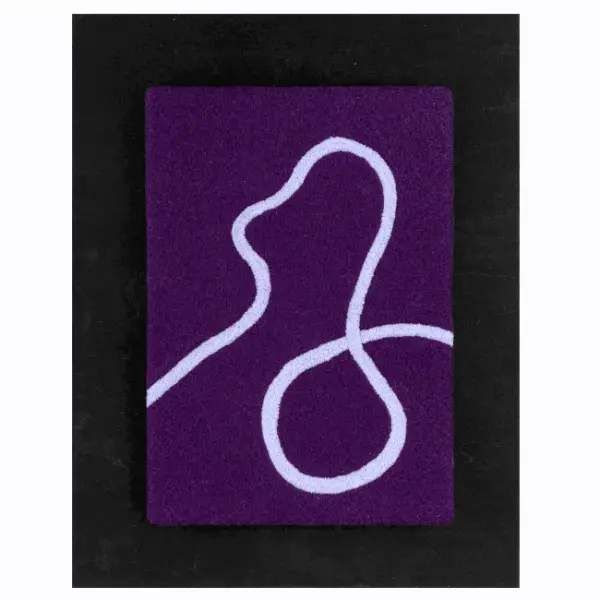
Do you have any secrets in your work you will tell us?
Part of my practice is trying to understand my art, understand why I sew, what the patterns and shapes mean, why I pick certain colours – I think these are secrets within my artworks, but they are secrets that I am trying to unpick, unravel and uncover. Do they reflect me at that moment?

How do you hope history treats your work?
Kindly… but thinking about things like this is something that I try and avoid, like the pressures of ‘art history’ the pressures of how my art might be seen in the future are topics that I could sit and ponder for hours. They become counterproductive and stop me making so for now, my focus is to stay in the moment and to concentrate on creating and pushing my art forward.

Where can we find you and your work?
The best place to find me and to keep up to date with exhibitions (and other happenings) is on Instagram. I treat Instagram as my daily sketchbook or diary – I post every day, it has become a record of my practice, my thoughts and my activities.
Find out even more about Jack at the NeedleXChange podcast in which we talk about the fearlessness of his zen approach to mark making.



